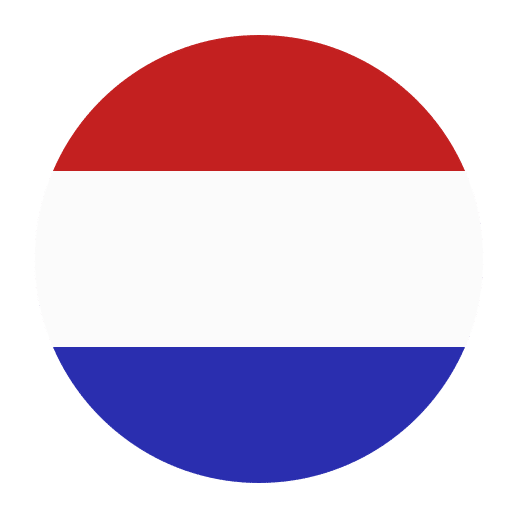When traveling to the Netherlands or trying to immerse yourself in Dutch culture, one of the most practical skills you can develop is the ability to decode Dutch signboards and menus. Understanding these everyday texts not only helps in navigating through cities and towns but also enriches your cultural experience. This article aims to provide a comprehensive guide to help English speakers decipher common Dutch signboards and menus.
Understanding the Basics
Before we dive into specific examples, it’s essential to familiarize ourselves with some fundamental aspects of the Dutch language. Dutch is a West Germanic language closely related to English and German. This relationship means that English speakers can often recognize certain words and grammatical structures, making the learning process somewhat more manageable.
Common Dutch Words and Phrases
To get started, here are some frequently encountered Dutch words and their English translations:
– **Uitgang**: Exit
– **Ingang**: Entrance
– **Toilet**: Restroom
– **Gesloten**: Closed
– **Open**: Open
– **Verkoop**: Sale
– **Restaurant**: Restaurant
– **Café**: Café
– **Koffie**: Coffee
– **Brood**: Bread
– **Water**: Water
– **Melk**: Milk
Having these basic terms at your disposal will significantly ease your journey through Dutch-speaking regions.
Decoding Signboards
Signboards are omnipresent in any urban setting, guiding pedestrians, drivers, and tourists alike. Here are some categories and examples to help you get acquainted with common Dutch signboards.
Directional Signs
Directional signs are crucial for navigation. They often contain a combination of text and symbols to convey information efficiently.
– **Uitgang (Exit) / Ingang (Entrance)**: These signs are straightforward. “Uitgang” will guide you out of a building or area, while “Ingang” shows you where to enter.
– **Toilet (Restroom)**: Public restrooms are usually marked with either “Toilet” or “WC.” Look out for these signs in public places like train stations, shopping centers, and parks.
– **Parkeren (Parking)**: This sign indicates a parking area. You might also see “P” used as a shorthand for parking.
Regulatory Signs
Regulatory signs are essential for maintaining order and safety. Understanding these can help you follow local rules and avoid fines.
– **Verboden te roken (No Smoking)**: This sign indicates that smoking is not allowed in the designated area.
– **Geen toegang (No Entry)**: “Geen toegang” means no entry. You’ll often see this at restricted areas.
– **Gesloten (Closed)**: Shops or facilities will display this sign when they are not open for business.
Informational Signs
Informational signs provide useful details about services, facilities, and local attractions.
– **Tourist Information**: Look for signs that say “VVV” or “Toeristeninformatie.” These offices provide maps, brochures, and other resources for tourists.
– **Wi-Fi**: Many cafés and public spaces offer free Wi-Fi. Look for signs that say “Gratis Wi-Fi.”
– **Open / Gesloten (Open / Closed)**: These signs indicate the operating status of a business or facility. “Open” means it’s available for service, while “Gesloten” means it’s not.
Understanding Menus
Navigating a Dutch menu can be a delightful yet daunting experience. Whether you’re at a fine dining restaurant or a casual café, knowing how to read the menu can significantly enhance your dining experience.
Course Categories
Dutch menus are typically divided into several sections, similar to those in English-speaking countries. Here are some common categories:
– **Voorgerechten (Appetizers)**: These are the starters or first courses. Examples include “soep” (soup) and “salade” (salad).
– **Hoofdgerechten (Main Courses)**: The main part of the meal. This section often includes various types of meat, fish, and vegetarian dishes.
– **Nagerechten (Desserts)**: The sweet course at the end of the meal. Popular items might include “ijs” (ice cream) and “taart” (cake).
– **Dranken (Drinks)**: Beverages, including both alcoholic and non-alcoholic options.
Common Menu Items
Let’s explore some common items you might find on a Dutch menu:
– **Broodje (Sandwich)**: A type of sandwich, often served with various fillings like cheese (kaas), ham (ham), or chicken (kip).
– **Pannenkoeken (Pancakes)**: Dutch pancakes are thinner than American ones and can be served with sweet or savory toppings.
– **Erwtensoep (Pea Soup)**: A traditional Dutch soup made from split peas, often served with sausage.
– **Stroopwafel**: A popular Dutch sweet treat consisting of two thin waffles with a caramel-like syrup filling.
Special Dietary Requirements
If you have specific dietary needs, here are some useful phrases:
– **Vegetarisch (Vegetarian)**: Indicates vegetarian options.
– **Glutenvrij (Gluten-Free)**: Indicates gluten-free options.
– **Lactosevrij (Lactose-Free)**: Indicates lactose-free options.
Practical Tips for Decoding Dutch Signboards and Menus
While understanding the words and phrases is essential, here are some additional tips to make your experience smoother:
Use Visual Cues
Dutch signboards and menus often include images or symbols. Pay attention to these visual cues as they can provide context and aid in understanding the text.
Leverage Technology
There are several language translation apps available that can help you translate Dutch text in real-time. Apps like Google Translate have features that allow you to use your smartphone camera to translate text instantly.
Practice Basic Phrases
Learning some basic Dutch phrases can go a long way. Simple greetings, thank yous, and questions can help you communicate more effectively and show respect for the local culture.
Ask for Help
Don’t hesitate to ask for help if you’re unsure about something. Most Dutch people speak English quite well and are usually willing to assist tourists.
Conclusion
Decoding Dutch signboards and menus may seem challenging at first, but with a bit of practice and familiarity, you’ll find it much easier than you initially thought. Understanding these everyday texts not only helps in practical situations but also provides deeper insights into Dutch culture and lifestyle. So, next time you find yourself in the Netherlands, you’ll be well-equipped to navigate your way through the streets, restaurants, and beyond. Happy exploring!

